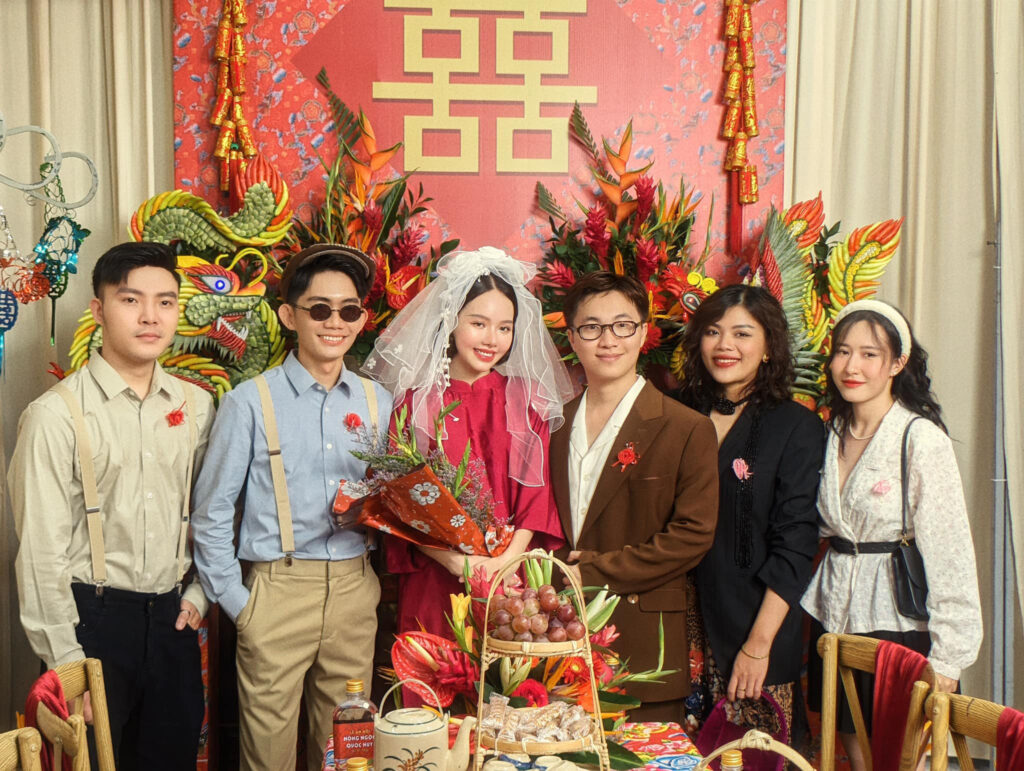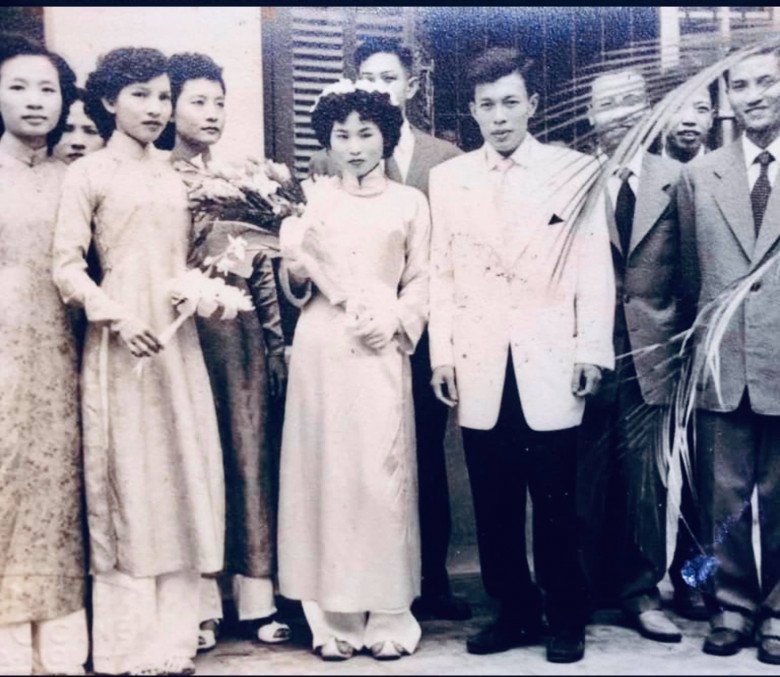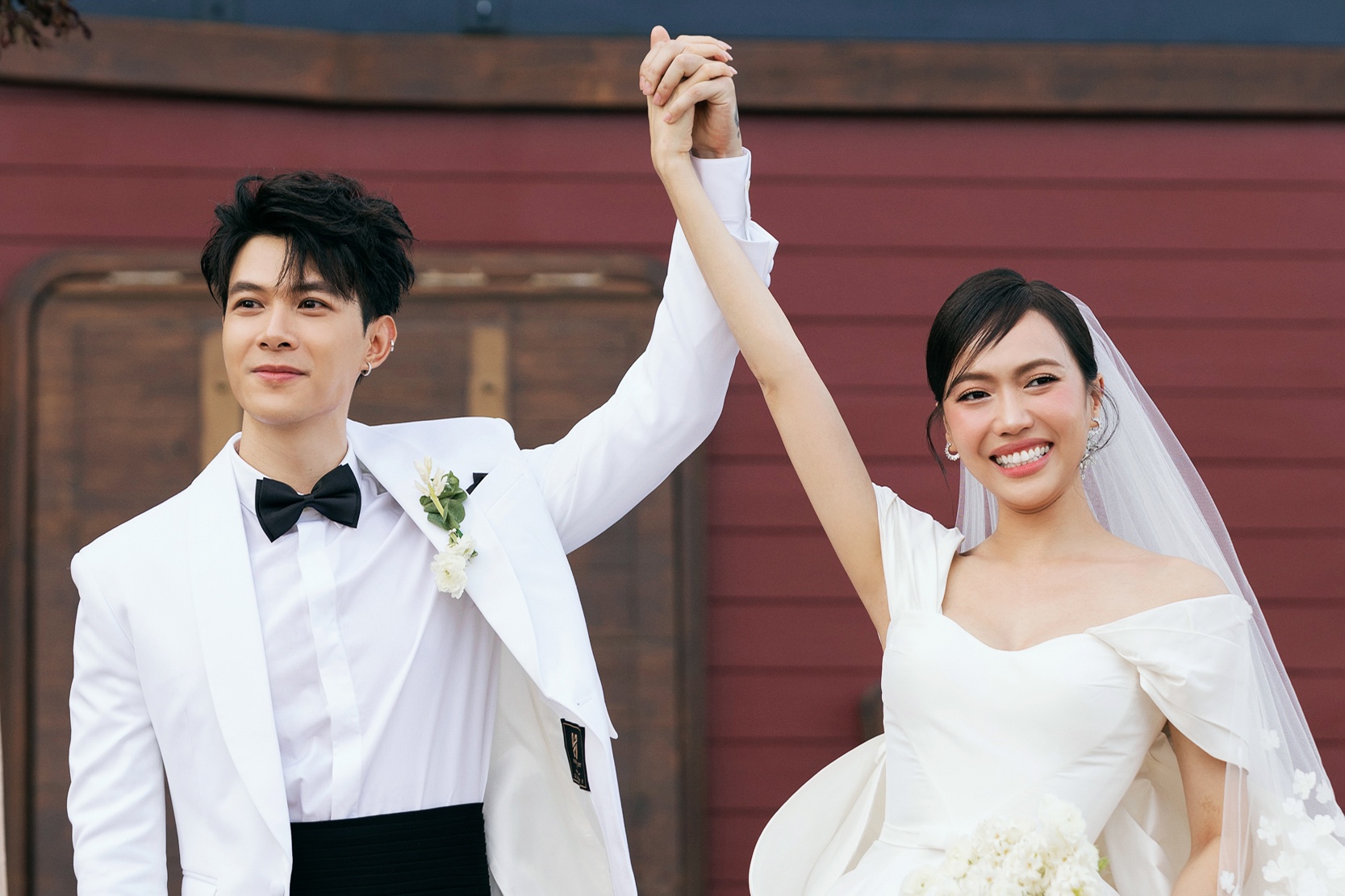
Get married in Vietnam: The tradition development
“Get married in Vietnam” is a deeply significant event, marking not just the union of two individuals but also the joining of two families. Over time, Vietnamese wedding traditions have evolved significantly, blending ancient customs with modern trends.

Get married in Vietnam: Old Traditions
Traditionally, Vietnamese weddings were elaborate affairs spanning multiple ceremonies, emphasizing family involvement, respect for ancestors, and adherence to auspicious timings.
Key Traditional Ceremonies:
Proposal Ceremony:
The groom’s family (often just parents and a matchmaker) pays an informal visit to the bride’s home to express their son’s intention to marry and formally ask for permission. This was a preliminary step to ensure both families were agreeable. Gifts like betel leaves and areca nuts (symbolizing enduring love) were essential.
Engagement Ceremony / Betrothal Ceremony:
This was a much more formal and significant event, usually held months or even a year before the wedding. The groom’s family, led by elders and accompanied by young men carrying beautifully decorated trays of elaborate gifts (betel and areca, tea, wine, traditional cakes like “bánh phu thê” or “bánh cốm,” sticky rice, roasted pig, jewelry), would arrive at the bride’s house in a procession.
The gifts were accepted by young women from the bride’s side. Inside, a formal introduction of family members occurred, and the couple would burn incense to inform and seek blessings from the bride’s ancestors. The engagement ring and other jewelry were presented to the bride. A banquet would follow.
Bride Asking Ceremony – Get married in Vietnam:

A brief ritual, typically on the wedding day itself, just before the main procession. A small delegation from the groom’s family would visit the bride’s home for a final request to “take” the bride.
Bride Procession Ceremony:
The groom’s family would lead a procession to the bride’s house to officially bring her to the groom’s home. In the past, this might involve walking or palanquins; later, decorated cars became common. At the bride’s home, the couple would perform rituals before her ancestral altar, bowing to thank her parents for raising her. The bride, often accompanied by her mother carrying a lit torch or rice (symbolizing warmth and prosperity), would then leave her family home to join the groom’s procession.
Ancestral Ceremony at Groom’s House:
Upon arrival at the groom’s house, the couple would perform another ritual before the groom’s ancestral altar, seeking blessings and officially welcoming the bride into her new family.
Wedding Reception/Banquet – Get married in Vietnam:
A large celebration where guests not present at the family ceremonies would be invited. This was a grand feast, often held at home or a rented venue, where the couple would greet each table, thanking guests, and receiving “lucky money” (money in red envelopes).
See also: Vietnamese communication culture: A comprehensive comparision to USUK
Key Characteristics of Old Traditions – Get married in Vietnam:
- Family Approval: Parental and ancestral consent was paramount. Marriages were often arranged or heavily influenced by families.
- Auspicious Dates: Fortune tellers or monks were consulted to select propitious dates and times for ceremonies, based on the couple’s zodiac signs and birthdates, to ensure a prosperous future.
- Symbolism: Every gift, color (red and gold for luck), and action held deep symbolic meaning.
- Community Involvement: Weddings were community events, signifying social status and reinforcing family networks.
- Traditional Attire: Brides traditionally wore áo dài (often red), while grooms might wear a simpler áo dài or a suit.
Get married in Vietnam: Current Trends

Modern Vietnamese weddings in 2025 are a fascinating blend of these rich traditions and contemporary global influences. The emphasis has shifted towards personalization, convenience, and often, a more streamlined approach, while still retaining core cultural values.
Current Trends and Changes:
Simplified Rituals:
- Many couples combine or significantly shorten the pre-wedding ceremonies. All might be merged or simplified to just one “Engagement Ceremony” held shortly before the wedding day, especially in urban areas due to busy schedules.
- The procession still occurs but is usually done with decorated cars, sometimes involving a brief “gate-crashing” game by bridesmaids.
- The ancestral altars remain central, with the tea ceremony and respectful bows to parents/elders still being a crucial part of the wedding day, often done at both the bride’s and groom’s homes before the main reception.
Wedding Attire – Get married in Vietnam:
- Traditional Ao Dai: The “ao dai” remains incredibly popular and is almost always worn by the bride (and often the groom and their families) for the engagement ceremony and the traditional family rituals on the wedding day. There’s a trend towards more elaborate, embroidered, or even white ‘ao dai” for brides.
- Western Gowns & Suits: A white Western-style wedding dress and a suit for the groom are almost standard for the main reception, reflecting global trends. Some brides have multiple costume changes throughout the reception.
Venues and Receptions:
- Lavish Banquets: Receptions are still grand affairs, often held in large restaurants, convention centers, or hotel ballrooms, accommodating hundreds, sometimes thousands, of guests. The focus is on a formal dinner, entertainment (singing, dancing), and table visits by the couple to greet guests and receive lucky money.
- Destination Weddings & Elopements: A growing trend, particularly among younger, affluent couples, is to have a smaller, more intimate ceremony in scenic locations like beaches (Phu Quoc, Da Nang), mountains, or luxury resorts, sometimes combined with a honeymoon. “Elopement weddings” are gaining traction to avoid the stress and cost of large traditional banquets.
Photography & Videography:
- Pre-wedding photoshoots (often elaborate, with multiple outfits and scenic locations) are a must-have.
- Professional wedding photography and videography for the actual day are standard, capturing every moment.
- Guests taking photos with the couple at the reception entrance (like a step-and-repeat) is very common.
Gift Giving – Get married in Vietnam:
- While traditional gifts were once practical household items, cash in red envelopes (lucky money) is now the most common and preferred gift for guests, offering convenience for both givers and receivers. Close family members might still give gold jewelry or meaningful household items.
Decision-Making:
- While parental involvement in choosing dates and giving blessings remains important, couples today have much more autonomy in selecting their partners, planning their wedding styles, and deciding on the level of tradition they wish to incorporate.
Technology – Get married in Vietnam:
- Social media plays a huge role, from sharing engagement announcements and pre-wedding photos to live-streaming parts of the ceremony. Digital invitations are also becoming more common.
In summary, Vietnamese weddings in 2025 honor the deep-seated cultural reverence for family and ancestors through core rituals like the ancestral altar ceremonies and gift exchanges, while embracing modern preferences for personalization, convenience, and global aesthetics in terms of attire, venues, and overall celebration style. The result is often a beautiful fusion that reflects Vietnam’s dynamic society.
